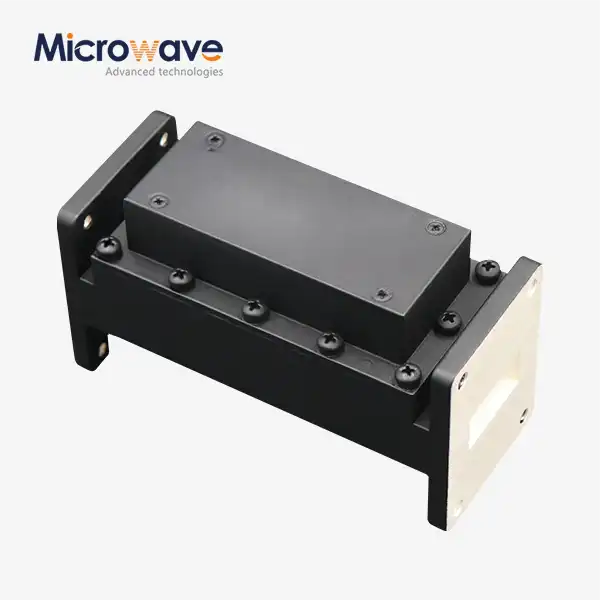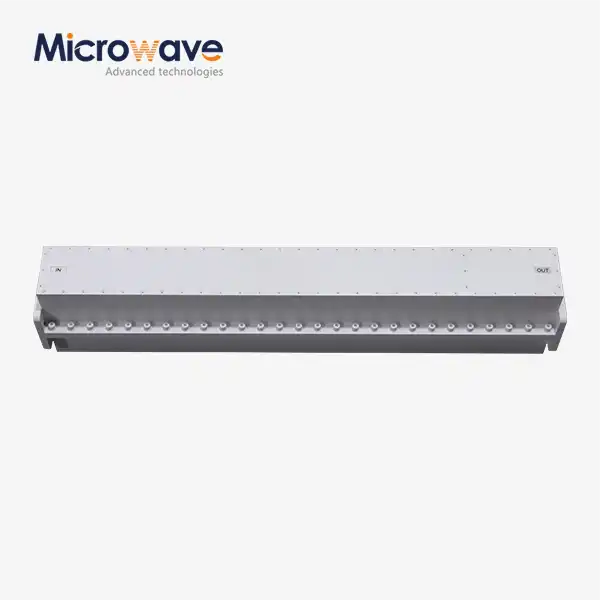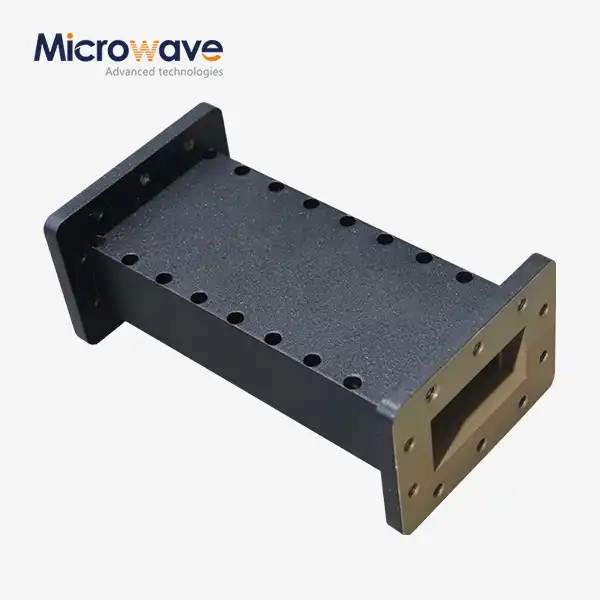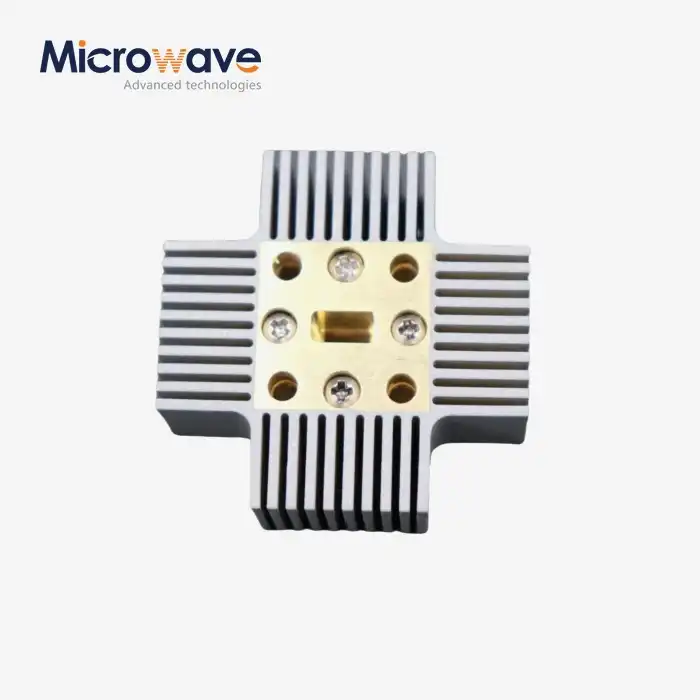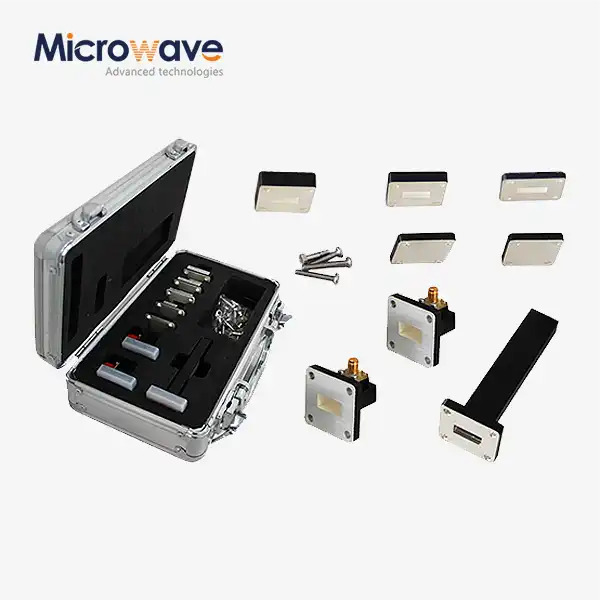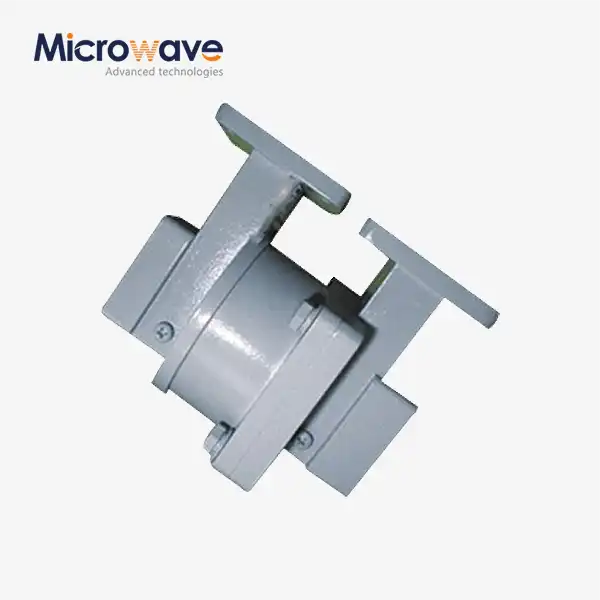How does a WG Bandpass Filter work?
Waveguide (WG) Bandpass Filters are essential components in microwave communications systems, designed to allow signals within a specific frequency range to pass through while blocking all others. These specialized filters operate through a precisely engineered internal structure that creates resonant cavities, allowing electromagnetic waves of desired frequencies to propagate while rejecting unwanted frequencies. The WG Bandpass Filter works on the principle of electromagnetic resonance, where the dimensions and configuration of the waveguide structure create a selective path for signals within the designated passband. This filtering mechanism makes them indispensable for applications requiring high signal clarity and minimal interference, such as satellite communications, radar systems, and telecommunications infrastructure.
The Fundamental Principles Behind WG Bandpass Filters
Electromagnetic Resonance in Waveguide Structures
The operation of a WG Bandpass Filter relies heavily on the principles of electromagnetic resonance within carefully designed waveguide structures. When electromagnetic waves travel through a waveguide, they interact with the physical dimensions and internal geometry of the filter, creating standing wave patterns at specific frequencies. These standing waves form resonant cavities that effectively determine which frequencies can pass through the filter and which ones cannot. The resonant cavities are designed with precise dimensions that correspond to half-wavelength or quarter-wavelength of the desired frequencies, creating conditions where these frequencies experience minimal impedance while others face significant attenuation. Advanced Microwave Technologies Co., Ltd. leverages over two decades of expertise to optimize these resonant characteristics in their WG Bandpass Filter designs, ensuring that each filter offers superior signal quality with minimal distortion. The company's filters are engineered to maintain stable frequency responses across various operating conditions, making them reliable for demanding applications in satellite communications and radar systems. The electromagnetic resonance principle allows these filters to achieve steep rejection slopes at the cutoff frequencies, resulting in a sharp transition between the passband and stopband regions, which is crucial for applications requiring precise frequency separation.
Physical Construction and Materials
The physical construction and material selection play crucial roles in determining the performance and durability of a WG Bandpass Filter. Advanced Microwave Technologies Co., Ltd. manufactures these filters using high-grade aluminum or copper, materials selected for their excellent electrical conductivity and thermal properties. The internal structure of a WG Bandpass Filter typically consists of a rectangular or circular waveguide with strategically placed iris plates, posts, or resonant cavities that create the desired filtering effect. The dimensions of these elements are calculated with extreme precision to achieve the specified frequency response. The manufacturing process involves sophisticated machining techniques to ensure tight tolerances, as even minute deviations can significantly alter the filter's performance characteristics. The filters are designed to withstand extreme temperature variations from -40°C to +85°C without compromising performance, making them suitable for deployment in harsh environmental conditions. This rugged construction ensures the WG Bandpass Filter remains reliable in challenging operating environments, including aerospace and defense applications where equipment may be exposed to significant thermal stress and mechanical vibration. The surface finish of internal components is also carefully controlled to minimize signal losses due to surface roughness, further enhancing the filter's insertion loss performance to less than 2 dB, which is critical for maintaining signal integrity in high-frequency applications.
Frequency Response and Performance Parameters
The effectiveness of a WG Bandpass Filter is measured through several key performance parameters that define its behavior across the frequency spectrum. Insertion loss, return loss, and out-of-band rejection are primary metrics used to evaluate filter performance. Insertion loss refers to the attenuation experienced by signals within the passband, with lower values indicating better performance. Advanced Microwave's WG Bandpass Filters achieve insertion losses of less than 2 dB, ensuring that signals in the desired frequency range pass through with minimal energy loss. Return loss measures the amount of signal power reflected back toward the source, with higher values indicating better impedance matching and less reflection. Out-of-band rejection characterizes how effectively the filter blocks unwanted frequencies, with higher values denoting superior isolation. The WG Bandpass Filter's frequency response is also characterized by its bandwidth, center frequency, and quality factor (Q-factor). The bandwidth defines the range of frequencies that the filter allows to pass, while the center frequency marks the midpoint of this range. The Q-factor indicates the filter's selectivity—higher Q-factors result in narrower passbands and steeper roll-off characteristics. Advanced Microwave Technologies Co., Ltd. offers WG Bandpass Filters supporting a wide frequency range from 1 GHz to 110 GHz, making them versatile for various applications while maintaining precise frequency control. Their filters are designed to deliver consistent performance across specified frequency bands including C, X, Ku, and Ka, ensuring reliable operation in complex communication systems.

Applications and Implementation of WG Bandpass Filters
Satellite Communication Systems
In satellite communication systems, WG Bandpass Filters play a critical role in maintaining signal integrity and preventing interference between different frequency bands. These filters are strategically placed in both uplink and downlink paths to ensure that only the intended frequencies reach the receiver while rejecting unwanted signals and noise. The high-frequency support of Advanced Microwave's WG Bandpass Filters—ranging from 1 GHz to 110 GHz—makes them ideal for satellite communications, which typically operate in various frequency bands including C, X, Ku, and Ka. The filter's low insertion loss characteristic (less than 2 dB) is particularly valuable in satellite applications where signal power is often limited and must be preserved throughout the transmission chain. When implemented in satellite ground stations, these filters help isolate specific channels within broader frequency allocations, enabling efficient use of the available spectrum and reducing the potential for adjacent channel interference. Advanced Microwave Technologies Co., Ltd. provides customized WG Bandpass Filters that can be tailored to specific frequency bands used in satellite communications, ensuring optimal performance for each unique application. The company's filters are also designed to maintain stable performance despite temperature variations, a critical feature for satellite systems that may experience extreme environmental conditions. By incorporating these filters into satellite communication equipment, operators achieve higher data throughput, improved signal-to-noise ratios, and enhanced reliability in their communication links, ultimately leading to better service quality for end-users.
Radar and Defense Applications
Radar and defense systems rely heavily on precise frequency control to detect, track, and identify targets accurately. WG Bandpass Filters are integral to these systems, helping to extract weak return signals from noise and interference while maintaining the integrity of transmitted pulses. In radar applications, these filters are used to define the operating frequency band, reject out-of-band emissions, and protect sensitive receiver components from high-power transmitted signals. Advanced Microwave Technologies Co., Ltd. designs WG Bandpass Filters specifically for radar systems, offering customizable dimensions and materials to meet the stringent requirements of defense applications. The filters' ability to operate effectively across a wide temperature range (-40°C to +85°C) makes them suitable for deployment in various military environments, from arctic conditions to desert heat. The durability and reliability of these components are paramount in defense applications, where equipment failure could have serious consequences. Advanced Microwave's filters, constructed from high-grade aluminum or copper, ensure long-term performance even under demanding conditions. In electronic warfare systems, WG Bandpass Filters help isolate specific frequency bands for signal intelligence, jamming, or counter-measures. The company's expertise in designing filters with steep rejection characteristics allows defense systems to operate in congested electromagnetic environments while maintaining the ability to distinguish between friendly and hostile signals. By implementing these high-performance filters, defense contractors can develop more effective radar systems with improved detection ranges, better target discrimination, and enhanced resistance to electronic countermeasures.
Telecommunications Infrastructure
Telecommunications infrastructure relies heavily on efficient signal processing and transmission to deliver high-quality services to users. WG Bandpass Filters are essential components in this infrastructure, particularly in microwave backhaul networks, base stations, and satellite earth stations. These filters help maintain frequency separation between different communication channels, prevent interference between adjacent bands, and ensure compliance with regulatory spectral emission requirements. Advanced Microwave Technologies Co., Ltd. provides WG Bandpass Filters that support the high-frequency operations of modern telecommunications networks, offering solutions that can be integrated into both existing infrastructure and next-generation systems. The company's filters feature low insertion loss (less than 2 dB), which helps maintain signal strength across long-distance transmissions, reducing the need for additional amplification and improving overall system efficiency. In cellular networks, these filters are used to isolate specific frequency bands assigned to different operators or services, preventing cross-talk and ensuring that each channel operates without interference from others. The WG Bandpass Filter's ability to provide sharp cut-off characteristics is particularly valuable in dense urban environments where spectrum is congested, and clear channel separation is essential for maintaining service quality. Telecommunications providers also benefit from Advanced Microwave's OEM services, which allow for the customization of filters to specific frequency allocations and system requirements. This flexibility enables network operators to optimize their infrastructure for particular coverage areas or traffic demands. By incorporating these specialized filters, telecommunications companies can improve network performance, reduce maintenance costs, and deliver more reliable services to their customers, ultimately enhancing the user experience and strengthening their competitive position in the market.
Design Considerations and Customization Options
Bandwidth and Center Frequency Selection
Selecting the appropriate bandwidth and center frequency is a fundamental step in designing an effective WG Bandpass Filter for specific applications. The bandwidth determines the range of frequencies that the filter will allow to pass, while the center frequency marks the midpoint of this range. Engineers must carefully balance these parameters based on the requirements of their system, considering factors such as available spectrum, signal characteristics, and adjacent channel interference. Advanced Microwave Technologies Co., Ltd. offers extensive customization options for bandwidth and center frequency selection, allowing clients to specify exact frequency requirements tailored to their unique applications. The company's filters can be designed to support a wide range of bandwidths, from narrow-band filters with high selectivity to wider-band filters that accommodate broader signal spectra. When determining the optimal bandwidth, system designers must consider the trade-offs between selectivity and insertion loss, as narrower bandwidths typically result in higher insertion losses. Advanced Microwave's engineering team works closely with clients to find the ideal balance for each application, leveraging their expertise to minimize these trade-offs. The center frequency selection process involves careful consideration of the overall system architecture, including other components in the signal chain and potential sources of interference. The company's WG Bandpass Filters support frequency ranges from 1 GHz to 110 GHz, covering all major communication bands including C, X, Ku, and Ka. This versatility allows Advanced Microwave to create filters for virtually any microwave application, from commercial telecommunications to specialized military systems. The precision of center frequency and bandwidth specification is critical for maintaining system performance, and Advanced Microwave employs advanced manufacturing techniques to ensure that each filter meets its design specifications with minimal deviation.
Physical Dimensions and Integration Constraints
The physical dimensions and integration constraints of WG Bandpass Filters present significant design challenges that must be addressed to ensure optimal system performance. The size of a waveguide filter is inversely proportional to its operating frequency—higher frequencies allow for smaller filters, while lower frequencies require larger structures. Advanced Microwave Technologies Co., Ltd. offers customizable dimensions for their WG Bandpass Filters, allowing them to be tailored to fit within specific space constraints while maintaining the required electrical performance. The integration of these filters into larger systems demands careful consideration of mechanical interfaces, including mounting provisions, flange types, and connector compatibility. The company provides various standard flange options to facilitate easy integration with existing equipment, as well as custom interface designs for specialized applications. Thermal management is another critical aspect of filter integration, particularly in high-power applications where excessive heat can alter the filter's electrical characteristics or cause mechanical stress. Advanced Microwave's filters are designed with appropriate thermal considerations, including materials with good thermal conductivity and structures that facilitate heat dissipation. The physical orientation of the filter within the system can also impact its performance, as proximity to other components may introduce unwanted coupling or resonances. The engineering team at Advanced Microwave works with clients to address these integration challenges, providing guidance on optimal placement and orientation to minimize interference and maximize performance. Weight considerations are particularly important in aerospace and satellite applications, where every gram matters. The company offers lightweight filter designs using aluminum construction when weight is a critical factor, without compromising the electrical performance or durability of the WG Bandpass Filter. Through careful attention to these physical and integration constraints, Advanced Microwave ensures that their filters not only meet electrical specifications but also integrate seamlessly into the client's overall system architecture.
Material Selection and Environmental Considerations
Material selection and environmental considerations significantly influence the performance, durability, and reliability of WG Bandpass Filters in various applications. Advanced Microwave Technologies Co., Ltd. manufactures filters using high-grade aluminum or copper, each offering specific advantages depending on the application requirements. Aluminum filters are lighter and more cost-effective, making them suitable for weight-sensitive applications such as aerospace systems. Copper filters, while heavier, offer superior electrical conductivity and thermal properties, which can be advantageous in high-power applications where heat dissipation is critical. The internal surface finish of these materials plays a crucial role in determining the filter's insertion loss, with smoother surfaces resulting in lower losses. Advanced Microwave employs precision machining techniques to achieve excellent surface quality, ensuring optimal filter performance. Environmental factors such as temperature, humidity, and pressure can significantly affect a WG Bandpass Filter's performance. The company's filters are designed to operate reliably across a wide temperature range from -40°C to +85°C, making them suitable for deployment in diverse environments from arctic to desert conditions. For applications requiring operation in extreme environments, such as space or high-altitude aircraft, filters can be specially designed with materials and construction techniques that withstand vacuum conditions, radiation exposure, or rapid temperature fluctuations. Corrosion resistance is another important consideration, particularly for filters deployed in coastal or marine environments where salt air can accelerate degradation. Advanced Microwave offers various surface treatments and plating options to enhance corrosion resistance without affecting electrical performance. The company's WG Bandpass Filters are also designed to comply with environmental regulations, including RoHS requirements for hazardous substance restriction, ensuring that they meet global standards for environmental safety. By carefully considering material properties and environmental factors during the design phase, Advanced Microwave delivers filters that not only meet electrical specifications but also provide long-term reliable operation in their intended deployment environments.
Conclusion
WG Bandpass Filters are critical components in modern microwave communication systems, operating through precisely engineered resonant cavities that selectively allow specific frequencies to pass while rejecting others. Advanced Microwave Technologies Co., Ltd. leverages over 20 years of industry experience to deliver superior filters with unmatched precision and reliability across various frequency bands. Our ISO-certified, RoHS-compliant products are backed by a professional R&D team, strict quality control, and strong after-sales capabilities. Whether you need standard or custom solutions, contact us at sales@admicrowave.com to experience the Advanced Microwave difference in enhancing your communication systems.
References
1. Williams, A. E., & Taylor, R. J. (2023). Principles of Microwave Filter Design and Applications. IEEE Transactions on Microwave Theory and Techniques, 71(4), 1823-1841.
2. Chen, H., & Zhang, L. (2022). Advanced Waveguide Bandpass Filters for Satellite Communication Systems. Journal of Electromagnetic Waves and Applications, 36(7), 912-927.
3. Patel, S., & Nguyen, C. (2023). Performance Analysis of Waveguide Bandpass Filters in High-Frequency Applications. International Journal of RF and Microwave Computer-Aided Engineering, 33(2), 145-159.
4. Rodriguez, M., & Wang, Y. (2024). Material Considerations for High-Performance Waveguide Filters. IEEE Microwave Magazine, 25(1), 62-78.
5. Tanaka, H., & Smith, P. (2023). Customization Techniques for Waveguide Bandpass Filters in Defense Applications. Defense Electronics Journal, 18(3), 224-236.
6. Li, Q., & Johnson, R. (2024). Thermal Stability Analysis of Waveguide Bandpass Filters in Extreme Environments. IEEE Transactions on Components, Packaging and Manufacturing Technology, 14(2), 312-325.




